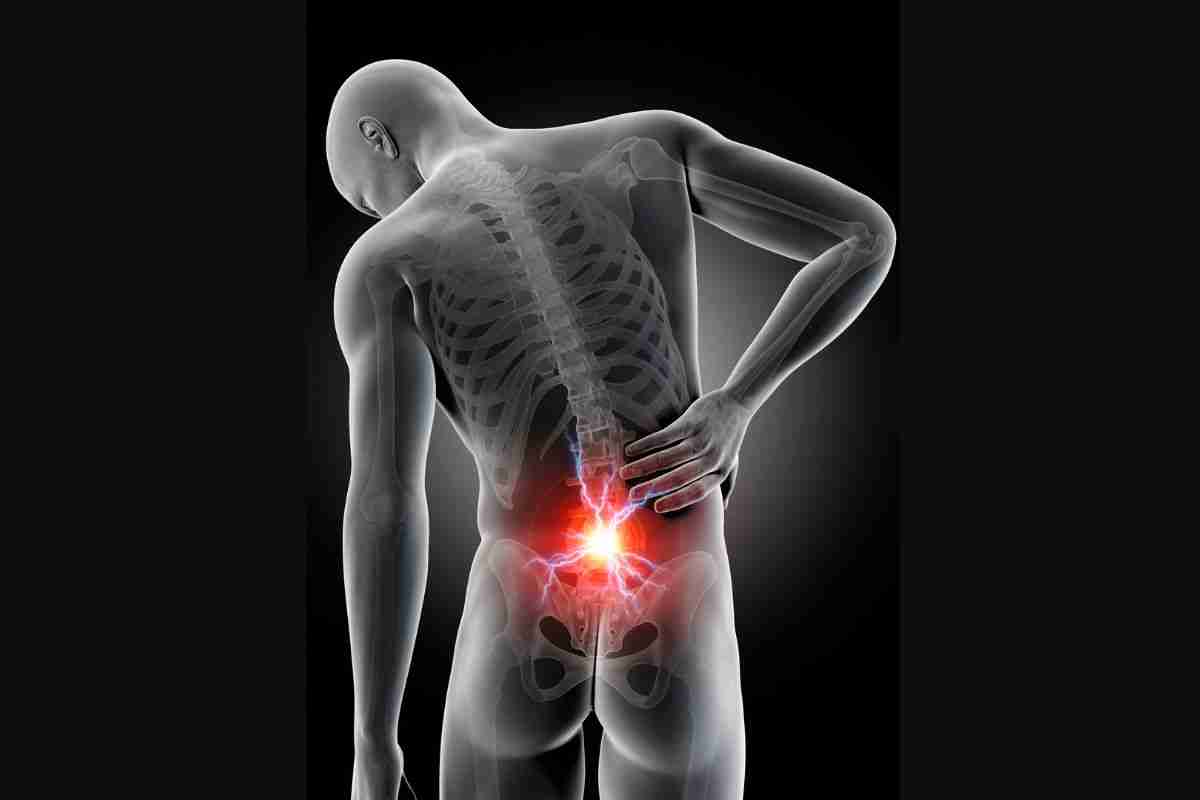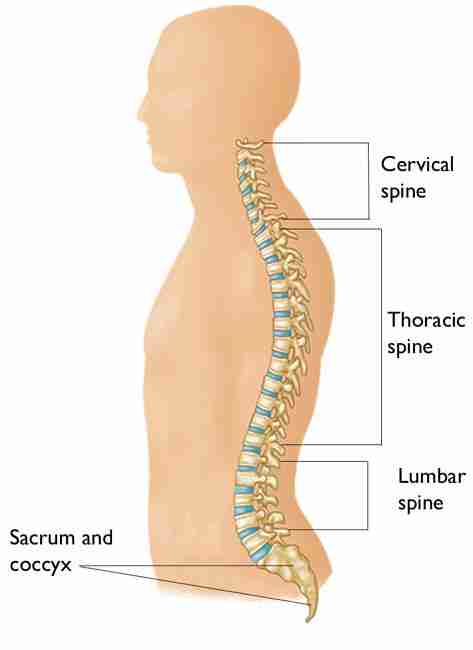
Are you a military veteran who is filing for VA disability benefits? This blog article will provide vital information so that veterans like yourself can understand how radiculopathy can be tied to a service connected condition that could increase your VA disability rating for back pain.
Radiculopathy is a condition if left untreated can cause sharp pain in the legs, neck or with shoulder and elbow movements. Despite the severe pain, many veterans remain unaware that with a service connection they could file a VA disability claim for a radiculopathy VA rating.
Additionally, depending on their radiculopathy symptoms, veterans could file for a VA disability rating for radiculopathy as a secondary service connection to a lumbosacral strain VA rating.
We’ll examine the radiculopathy symptoms, type of radiculopathy and where pain is along the spinal cord, understand the diagnostic code and the disability rating schedule the VA uses.
Essentially give you the intel you need to get started with filing for increased VA disability benefits with a radiculopathy diagnosis. Let’s get started!
Understanding Radiculopathy – Definition and Symptoms
Radiculopathy is defined as a disorder of the spinal column where a pinched nerve root causes sharp pain. Common symptoms of radiculopathy depend on which type a veteran experiences but can range from leg numbness and tingling in the arms or legs, weakness in the arms or legs, and radiating pain that shoots down the arms or legs.
Severe cases can also cause muscle atrophy or even complete paralysis.
Below are three types of radiculopathy that are eligible for a VA Disability Rating:
Cervical Radiculopathy
Cervical Radiculopathy affects the neck area, mostly in the C6 or C7, where the nerve root in the neck is irritated or compressed towards the end of the cervical spine. Neck movements such as turning or nodding the head, or leaning the head back can aggravate cervical radiculopathy symptoms.
Thoracic Radiculopathy
Throacic Radiculopathy refers to the middle spine or thoracic spine where pinched or compressed nerve roots, herniated disc, degenerative joint disease or bone spurs cause pain or numbness. Pain is usually in the back, arms, shoulders or legs. Other symptoms are also numbness, muscle weakness or other abnormal sensations. It is the least common form of radiculopathy.
Peripheral Neuropathy
Peripheral neuropathy is a condition where damage to the peripheral nerves (nerves located outside of the brain and spinal cord) causes weakness, numbness, and pain. It can affect any part of the body but usually affects the feet and hands first. Thoracic radiculopathy symptoms may overlap with peripheral neuropathy symptoms.
Common symptoms of peripheral neuropathy include tingling sensation in the feet or hands, burning sensation, sharp pain, numbness and muscle weakness. Service members can submit a VA disability claim for peripheral neuropathy under diagnostic code 8520 with a VA disability rating of 10%.

Lumbar Radiculopathy
Lumbar Radiculopathy is the most common type of radiculopathy that affects the (L4-S1) lower spine or lumbar spine. It is an inflammation of the nerve root which usually involves the sciatic nerve. This is also called the Sciatica. Symptoms include radiating pain from the lower back to the legs or hips due to pinched nerve roots in the lower back.
A medical diagnosis of lumbar radiculopathy will indicate that the sciatic nerve in your lower back is pinched or compressed causing symptoms of pain or irritation that travels down the leg hip and into the foot.
Pain is usually felt in the glutes, hips and thighs. Radiculopathy symptoms in the lumbar spine generally affect most people between 30-50 years old.
Knowing how to identify the symptoms is key when looking into VA disability rating increases with radiculopathy.
Common Causes of Radiculopathy Veterans Experience
To recap, radiculopathy primarily affects nerve roots, resulting in pain described as burning or sharp, tingling or numbness, muscle weakness that may travel down the arm or leg. Some of the causes could have occurred as a result of an aggravated back injury or strain from any of the following during military service:
- Lifting, pushing, or pulling heavy equipment
- Operating a weapon
- Jumping or falling
- Explosions
- Car Accidents
- and more….
Additionally these other spinal conditions can also cause radiculopathy:
- Degenerative Disc Disease
- Stenosis
- Herniated Discs
- Certain form of arthritis
Secondary Conditions to Radiculopathy
The below have the diagnostic codes for a VA disability rating and can be claimed as secondary service connection to radiculopathy.
Spinal Stenosis is narrowing of the spinal column which can cause nerve root compression and subsequent radiculopathy symptoms. Spinal stenosis occurs when narrowed spaces in the spine push on nerves, which causes pain, numbness and other neurological symptoms.
The most common area affected by this condition is the lumbar region or lower back.
Herniated discs is a tear in the disc that causes the gel-like substance inside to leak out and press on the nerve roots. In some cases, surgery might be necessary to relieve pressure from the affected area.
Degenerative Disc Disease results from years of wear and tear on discs which can lead to bulging, herniation and eventually a tear in the disc. This can cause pain as well as radiculopathy symptoms.
Injury to the spine column can also damage a nerve root which leads to inflammation and irritation of the affected area. Surgery may be required for severe cases of injury to correct any structural damage caused by the injury.
Cysts and tumors can also press on nerve roots causing inflammation, irritation and pain. Treatment usually involves surgical removal of the cyst or tumor but in some cases, radiation therapy might be necessary depending on the severity of the condition.
If any of these symptoms or causes sound familiar the best course of action you can take is to visit your VA doctor to get a current medical diagnosis of the region of the back before filing a VA disability claim.
Diagnosing Radiculopathy – Tests Used to Determine Its Presence
Diagnosing radiculopathy can be tricky and is often done through MRI scans of the lumbar spine combined with physical examinations by a doctor. MRI scans are essential to attain a radiculopathy VA rating.
They are important as they record any nervous damages as well as herniated discs or other spinal issues.
A physical examination may involve a series of tests and motions to determine if there is any tenderness in the back, any changes in sensation or reflexes, or the presence of muscle weakness related to the nerves in this area.
Medical records during their military service should also be taken into account. Make sure that there has been no underlying trauma further contributing to the symptoms experienced by veterans who are looking to increase their VA disability ratings.
How Radiculopathy Affects a Veteran’s VA Rating
Radiculopathy can have a huge impact on a veteran’s VA disability rating. Radiculopathy is the term used to describe pain radiating along the spine. This issue can not only be debilitating, but may indicate more than one type of injury or disability, especially with post traumatic issues.
Depending on severity and location, radiculopathy can be identified via cervical, thoracic or lumbar radiculopathy. In such cases, veterans can claim radiculopathy as a secondary condition in order to receive an increased VA rating. This may be eligible for a bilateral factor which is an additional 10% rating.
Diagnostic Codes & Rating Schedule
The VA uses a diagnostic code to rate any disability caused by radiculopathy based on the severity of symptoms. According to 38 CFR 4.124a the VA rating schedule for radiculopathy is:
- 10% – Mild symptoms such mild numbness or tingling in extremities, occasional weakness and slight pain.
- 20% – Moderate symptoms such as persistent discomfort of extremities, decrease in range of motion and some motor loss.
- 30% – Severe symptoms such as persistent pain, constant loss of sensation and significant motor impairment.
- 40% – Very severe symptoms such as complete paralysis or loss of function in the extremities or virtually total dysfunction in arms/legs due to muscle atrophy.
What You Need To Do To Claim A Higher VA Rating For Radiculopathy
For veterans looking to increase their VA rating for a radiculopathy condition, knowledge is key. It’s imperative to understand frequency, severity and duration of your symptoms. Depending on the frequency and severity of your symptoms, you may be able to claim a higher VA disability rating.
It is very important to gather all of your medical records during your military service. Additionally, visit the VA clinic or hospital to start documenting your symptoms to the doctors. They will give you a current medical diagnosis with an MRI scan. They will be able to see the area in the spine where they may be a pinched nerve based on your pain.
Lastly, in order to have a service connection for radiculopathy, you will need to show where you had an in service incident. If you can not prove service connection directly then you need to look at the file as a secondary service connection to your back. This of course assumes you have a service connected condition for your back.
In short, gather your records, look to file as a direct service connection or secondary service condition. Write a powerful personal statement and/or get buddy letters. This plan will give you a great opportunity to get a rating for radiculopathy.
Common Mistakes Veterans Make When Filing for a Rating for Radiculopathy
The most common mistake is that veterans most often did not know about the disability rating for radiculopathy. This is a high value secondary service connection.
Many veterans also make the common mistake of not accurately connecting their radiculopathy to a service connection when filing for a higher VA rating. This issue, along with being formally diagnosed, is crucial in order for veterans to be eligible for an increased rate.
If a veteran’s radiculopathy isn’t directly service connected to the back as a secondary service connection, their claim could be denied, even if it is documented. It is important for veterans to ensure they are service connected to VA disability and that a formal diagnosis is noted when filing. Otherwise they risk losing out on VA disability benefits they’ve worked hard to earn.
Tips For Increasing Your Chances Of Getting Approved For A Higher Va Rating
Seeking to increase your back pain VA rating? There are certain steps you need to take to maximize your chances of success. Collect your medical history for service connection. Then seek out buddy letters and all other forms of evidence related to service connection.
When writing your statement in support of claim, make sure all the events leading up to service connection. Be sure to include the time, place and describe how it impacts your daily life.
Additionally, have documentation from trusted medical professionals who can attest to the diagnosis and details of the service-connected condition.
With these resources and tips in mind, you’ll be better equipped for a successful application for increased VA ratings due to service-dominant radiculopathy.
Summary
Radiculopathy can have a debilitating effect on veterans, leading to severe pain and a decrease in mobility. To maximize their chance of getting approved for an increased VA rating due to service connected radiculopathy, veterans must understand the condition and know what steps to take.
This include medical records and filing as either a direct or secondary service connection. Also writing a powerful personal statement, and obtaining buddy letters. With the right preparation and evidence, you’ll be well-positioned to get your increased rating approved.
Another helpful tip is to consider using a VA accredited law group like VetsForever or a VSO who can help navigate the process. Make sure all of your paperwork is in order prior to filing your claim.
Stay in the fight and never give up!
FAQs
What is the VA rating for sciatica vs lumbar radiculopathy?
The legislation merely limits sciatica severity to mildly severe complete paralysis which is rated at 10%.
Radiculopathy can be rated as high as 40% rate on the left extremity and a 40% rate at the left extremity. This will also be eligible for the bilateral factor which will be an additional 10% rating.
What is the average VA rating for radiculopathy?
VA rating for service connected radiculopathy in Cervical and Lumbar for most veterans are rated 10% or 20% per ligament. A higher rating is reserved for more serious situations.
Does radiculopathy qualify for VA disability?
Yes, the VA considers that the service connection for radiculopathy is a VA disability and eligible for VA disability benefits. The rating for radiculopathy will vary depending on the intensity of disease. VA has set criteria for determining the ratings for radiculopathy.

